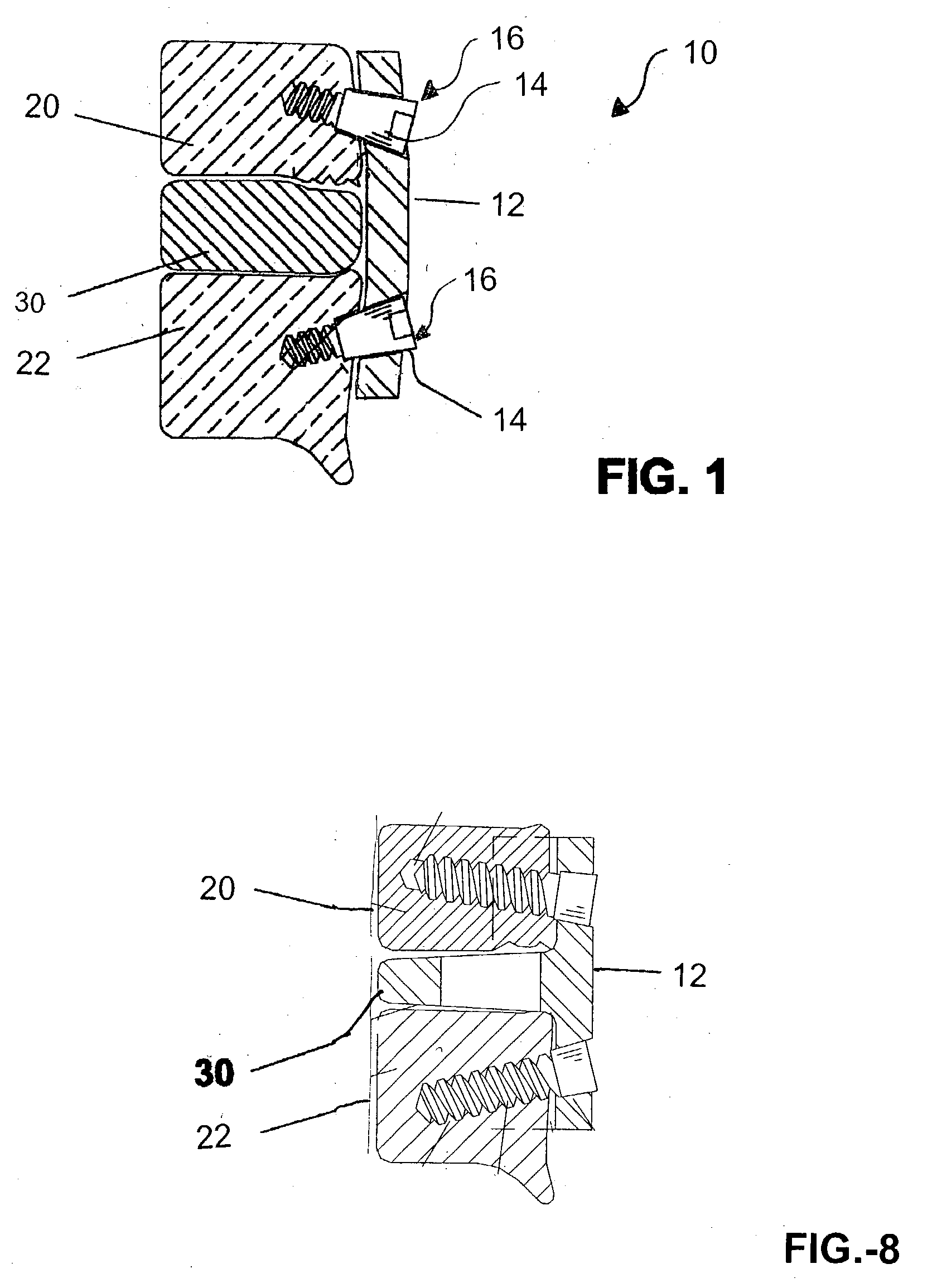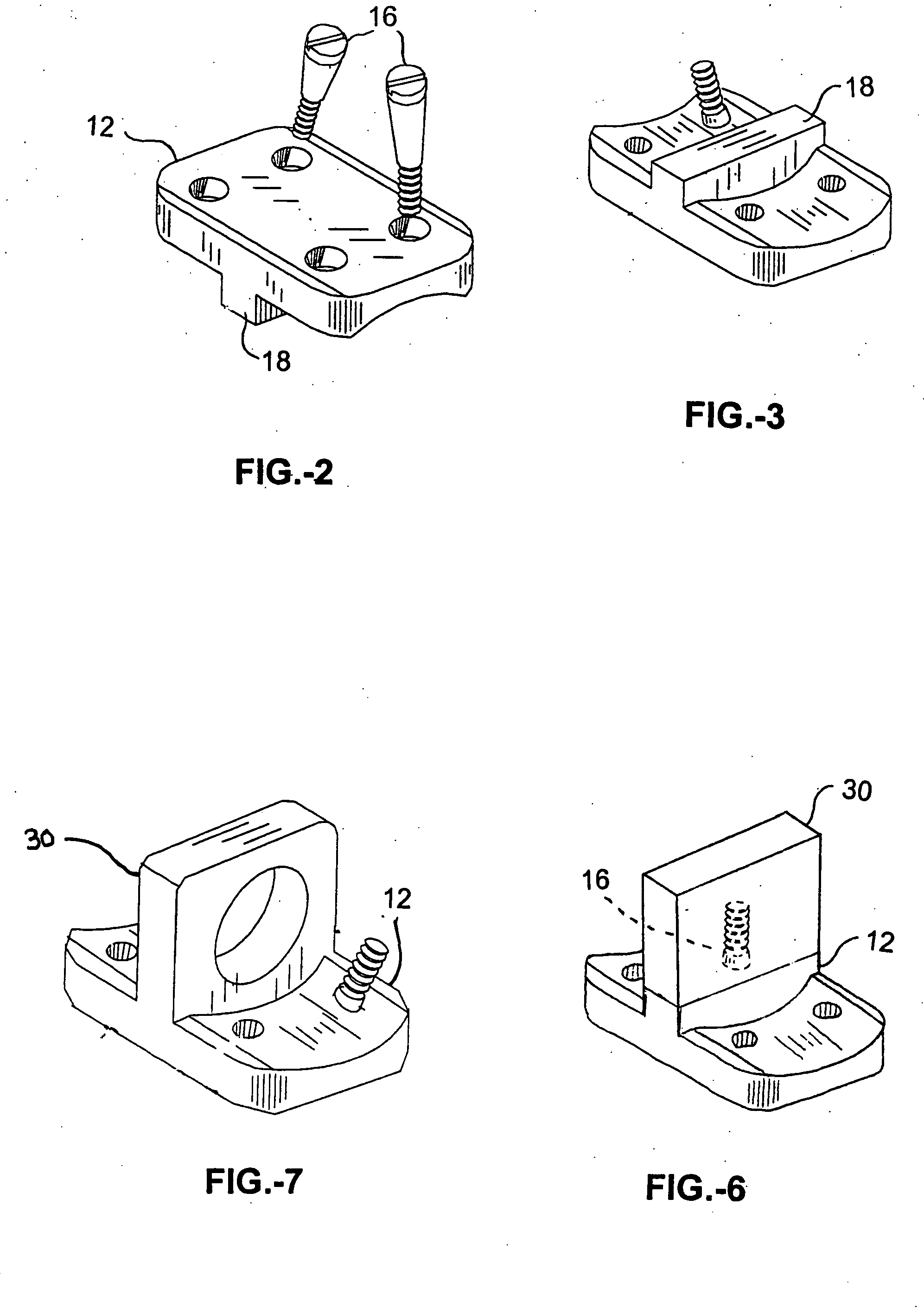Vertebral implant for bone fixation or interbody use
a technology of vertebral implants and bone fixation, applied in the field of implantable medical devices, can solve the problems of increased risk of morbidity from neural canal penetration, increased risk of surgical complications, and impaired normal bone healing, and achieve the effect of minimizing reactivity with adjacent parts
- Summary
- Abstract
- Description
- Claims
- Application Information
AI Technical Summary
Benefits of technology
Problems solved by technology
Method used
Image
Examples
Embodiment Construction
[0018] For simplification, the stabilizer system according to the invention will be described as a cervical stabilizer and embodiments thereof. Other embodiments are contemplated, wherein the components of the stabilizing system can be configured for the particular application. As the invention is directed to biodegradable stabilizing systems for use within the body, the invention can be adapted for other uses beyond cervical or bone column stabilization. For example, the device may function as a bone cement restrictor or for stabilization of bones in other areas of the body.
[0019] Referring to FIG. 1, a stabilization system 10 according to the invention comprises a stabilization plate 12 having a plurality of apertures 14. The stabilization plate 12 is retained in conjunction with at least two bone segments, such as the between two vertebrae 20 and 22, by means of screws 16. Certain characteristics of the stabilization plate 12 and screws 16 may be similar to that as described in ...
PUM
| Property | Measurement | Unit |
|---|---|---|
| shear strength | aaaaa | aaaaa |
| shear strength | aaaaa | aaaaa |
| tensile strength | aaaaa | aaaaa |
Abstract
Description
Claims
Application Information
 Login to View More
Login to View More - R&D
- Intellectual Property
- Life Sciences
- Materials
- Tech Scout
- Unparalleled Data Quality
- Higher Quality Content
- 60% Fewer Hallucinations
Browse by: Latest US Patents, China's latest patents, Technical Efficacy Thesaurus, Application Domain, Technology Topic, Popular Technical Reports.
© 2025 PatSnap. All rights reserved.Legal|Privacy policy|Modern Slavery Act Transparency Statement|Sitemap|About US| Contact US: help@patsnap.com



